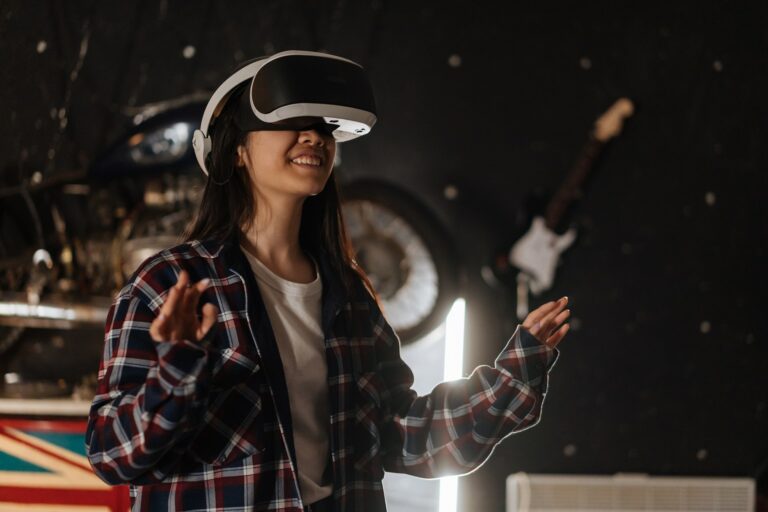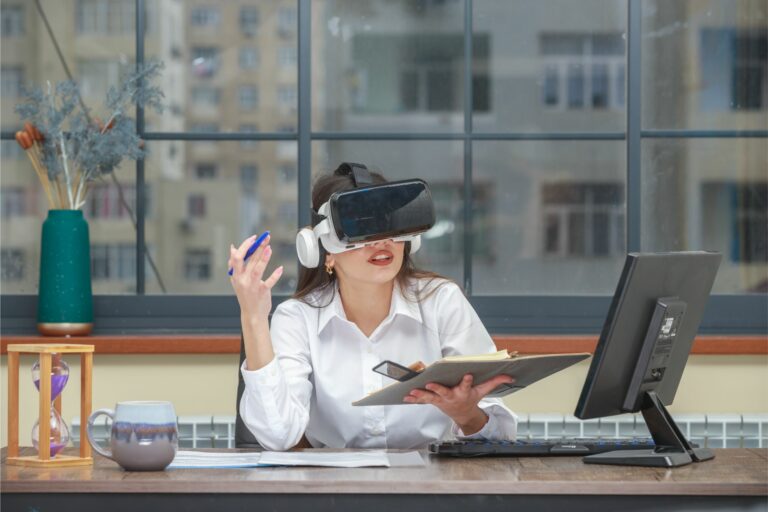Table of Contents
1. Introduction
2. The Evolution of Virtual Reality
3. Virtual Reality Applications
4. Advancements in Virtual Reality Technology
5. The Impact of Virtual Reality
6. Challenges and Opportunities
7. Future Innovations and Possibilities
8. Conclusion
1. Introduction
Virtual reality (VR) has come a long way since its inception. It has transformed from a futuristic concept to a promising technology that is revolutionizing various industries. With its immersive and interactive nature, virtual reality is poised to reshape the way we perceive and experience the world around us. In this article, we will explore the evolution of virtual reality, its applications, technological advancements, impact on society, challenges, and the exciting future that awaits.
2. The Evolution of Virtual Reality
Virtual reality traces its roots back to the mid-20th century when pioneers like Morton Heilig and Ivan Sutherland laid the foundations for immersive experiences. However, it wasn’t until the late 20th and early 21st centuries that virtual reality gained significant traction. The advancements in computing power, graphics, and display technologies propelled VR into the mainstream.
3. Virtual Reality Applications
Gaming and Entertainment
One of the primary domains where virtual reality has made a tremendous impact is gaming and entertainment. VR gaming offers an unparalleled level of immersion, allowing players to step into virtual worlds and engage with their surroundings in unprecedented ways.
Education and Training
Virtual reality has also found its way into the realm of education and training. By creating realistic simulations and interactive environments, VR enables learners to gain practical skills and experiences in a safe and controlled setting. From medical training to flight simulations, the potential applications are vast.
Healthcare and Therapy
Virtual reality has shown immense potential in the healthcare industry. It can be utilized for pain management, exposure therapy, rehabilitation, and mental health treatments. VR provides a controlled and customizable environment for patients, enhancing their well-being and aiding in their recovery.
Architecture and Design
Architects and designers can harness the power of virtual reality to visualize and present their concepts more effectively. VR enables clients to experience virtual walkthroughs of buildings, interiors, and landscapes, allowing for better decision-making and collaboration.
4. Advancements in Virtual Reality Technology
Virtual reality technology continues to evolve at a rapid pace, bringing us closer to more immersive and realistic experiences.
Improved Headsets and Displays
Modern VR headsets offer higher resolutions, wider fields of view, and reduced latency, resulting in more convincing and comfortable experiences for users.
Enhanced Sensory Feedback
Developments in haptic feedback systems enable users to feel and interact with virtual objects more realistically. Through tactile sensations and force feedback, VR can simulate textures, vibrations, and even resistance.
Realistic Environments
Advancements in graphics processing have allowed for more realistic and visually stunning virtual environments. From detailed textures to lifelike lighting, VR environments can now rival the quality of the physical world.
Gesture and Motion Tracking
Incorporating sensors and cameras, VR systems can track users’ movements and gestures accurately. This enables natural interaction within virtual environments, further enhancing the sense of presence.
5. The Impact of Virtual Reality
Transforming Industries
Virtual reality has the potential to transform various industries. From architecture and tourism to healthcare and manufacturing, VR is revolutionizing how businesses operate, train employees, and engage with customers.
Revolutionizing Communication
VR has the power to revolutionize communication by enabling virtual meetings, remote collaborations, and immersive storytelling. It brings people together across distances, fostering a sense of presence and shared experiences.
Empowering Virtual Experiences
Virtual reality opens up a world of possibilities for experiencing events, locations, and activities that might otherwise be inaccessible. From virtual travel to attending live concerts, VR allows individuals to transcend physical limitations and immerse themselves in new and exciting realms.
6. Challenges and Opportunities
While virtual reality holds immense promise, it also faces several challenges and presents opportunities for growth.
Overcoming Motion Sickness
Motion sickness is a common issue experienced by some users in virtual reality. Researchers and developers are continually working on minimizing this discomfort by improving tracking accuracy and reducing latency.
Ethical Considerations
As virtual reality becomes more pervasive, ethical considerations arise. Privacy concerns, content regulation, and the psychological impact of immersive experiences are important areas that need attention.
Accessibility and Affordability
For virtual reality to reach its full potential, accessibility and affordability are crucial factors. Continued advancements in hardware, software, and pricing models will make VR more accessible to a wider audience.
Business and Market Potential
The business and market potential of virtual reality is immense. Industries such as gaming, healthcare, and education are already leveraging VR, and the market is expected to grow exponentially in the coming years.
7. Future Innovations and Possibilities
The future of virtual reality holds exciting innovations and possibilities.
Augmented Reality Integration
The integration of virtual reality with augmented reality (AR) can create powerful mixed reality experiences. This combination enables users to interact with virtual elements superimposed on the physical world, opening up new dimensions of interaction and exploration.
Virtual Reality in Everyday Life
As VR technology becomes more compact and user-friendly, it has the potential to become an integral part of everyday life. From virtual social interactions to immersive media consumption, VR could enhance our daily experiences in unprecedented ways.
Virtual Travel and Exploration
Imagine being able to explore ancient ruins, walk on distant planets, or dive into the depths of the ocean, all from the comfort of your home. Virtual reality has the potential to revolutionize travel and exploration by offering realistic and immersive virtual experiences.
Collaborative Virtual Environments
Virtual reality has the potential to create collaborative environments where individuals from different locations can work, learn, and socialize together. Virtual meetings, conferences, and classrooms can foster engagement and collaboration on a global scale.
8. Conclusion
Virtual reality has surpassed the realm of science fiction and is now poised to shape our future. Its applications span across various domains, from gaming and education to healthcare and communication. With ongoing technological advancements and a growing market, the possibilities for virtual reality are beyond imagination. Embracing this transformative technology will unlock new opportunities and open doors to a promising future.



